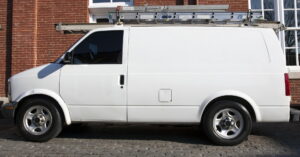Radiant heating systems are renowned for their luxurious warmth and energy efficiency. However, even the most robust systems can succumb to wear and tear over time. If your toasty floors are starting to feel tepid, there might be a culprit behind the scenes. Let’s delve into some common problems that can plague radiant heating systems and the gradual degradation they experience.
Understanding Your Radiant System:
There are two main types of radiant heating systems: hydronic (water-based) and electric (mat-based). Both systems share similar components and can experience similar wear-and-tear issues.
Common Culprits of Discomfort:
1. Failing Heating Element:
- Hydronic Systems: The boiler, responsible for heating the water, can malfunction with age. This can reduce the overall water temperature, leading to cooler floors.
- Electric Systems: Over time, the heating cables within the electric mats can deteriorate, reducing their ability to generate heat efficiently.
2. Circulation Issues:
- Hydronic Systems: Problems with the circulator pump, responsible for propelling water through the pipes, can lead to uneven heating or a complete lack of hot water circulation. Additionally, clogged pipes or air buildup can hinder water flow.
- Electric Systems: While electric systems don’t have pumps, loose connections within the heating mats can disrupt proper heat distribution.
3. Sensor & Thermostat Malfunctions:
Both hydronic and electric systems rely on sensors and thermostats to regulate temperature. Faulty sensors can misinterpret the room temperature, causing the system to underheat or overshoot the desired temperature.
4. Floor Covering Degradation:
The type of flooring you have can impact your radiant heating system’s performance. Thick carpets or materials with poor thermal conductivity can impede heat transfer from the floor to your living space.
The Gradual Wear and Tear of Time:
While some issues arise suddenly, many radiant heating problems are a result of gradual wear and tear. Here’s how different components deteriorate:
- Boilers (Hydronic Systems): As boilers age, their efficiency can decline, leading to increased energy consumption and reduced heat output.
- Circulator Pumps (Hydronic Systems): Like any mechanical device, pumps can wear down, reducing their pumping capacity and impacting water flow.
- Heating Cables (Electric Systems): Over time, exposure to heat can cause the cables within electric mats to deteriorate, reducing their ability to efficiently convert electricity into heat.
- Floor Coverings: Carpets and certain materials can lose their insulating properties over time, requiring a higher water temperature in hydronic systems to compensate.
Why Professional Diagnosis is Crucial:
Diagnosing the root cause of radiant heating issues often requires a trained professional. Here’s why:
- Specialized Knowledge: Understanding both the hydronic and electric systems requires specialized knowledge and experience.
- Diagnostic Tools: Technicians utilize specialized tools to pinpoint issues like malfunctioning pumps, faulty sensors, or clogged pipes.
- Safety Concerns: Some problems, like gas leaks in boilers, can pose safety risks. Professionals can identify and address these concerns promptly.
Keeping Your Radiant Comfort Flowing:
Regular maintenance is key to extending the lifespan of your radiant heating system. Scheduling annual inspections by a qualified HVAC technician can help identify and address potential problems before they cause significant discomfort or costly repairs.
Signs to Watch Out For:
- Uneven heating in different areas of your floor
- The entire floor feels cool despite the thermostat being set high
- Unusual noises coming from the boiler or pump (hydronic systems)
- Higher than usual energy bills
Schedule radiant heat repair in Huntington, IN by working with the experts at Collier’s Comfort. True Comfort, True Savings.

